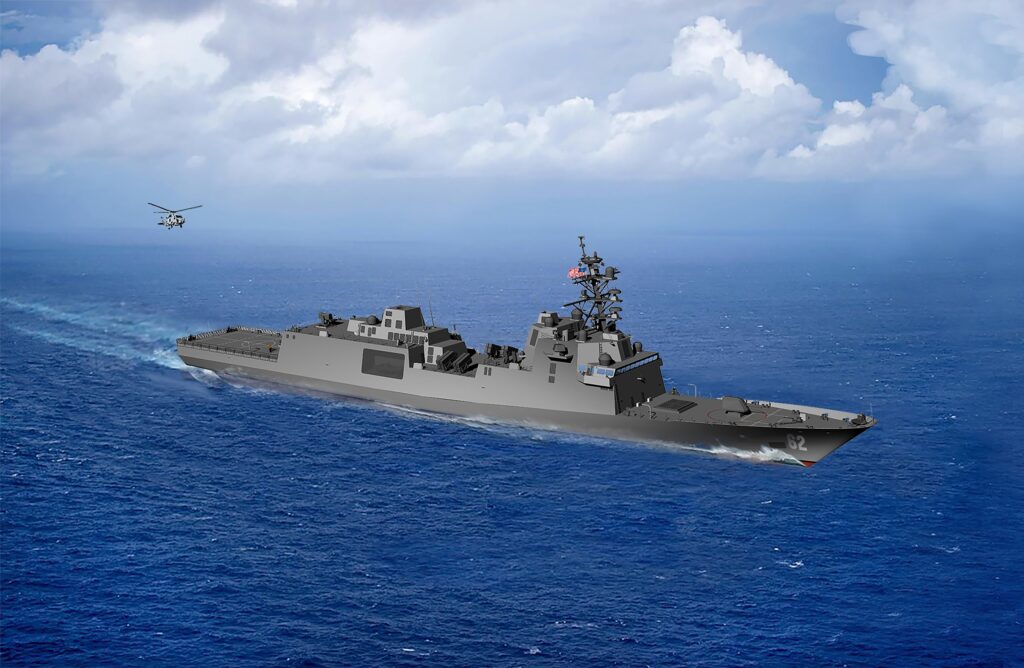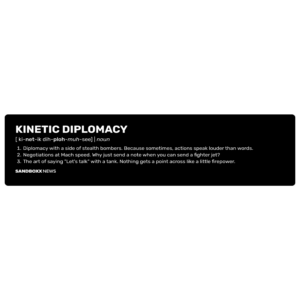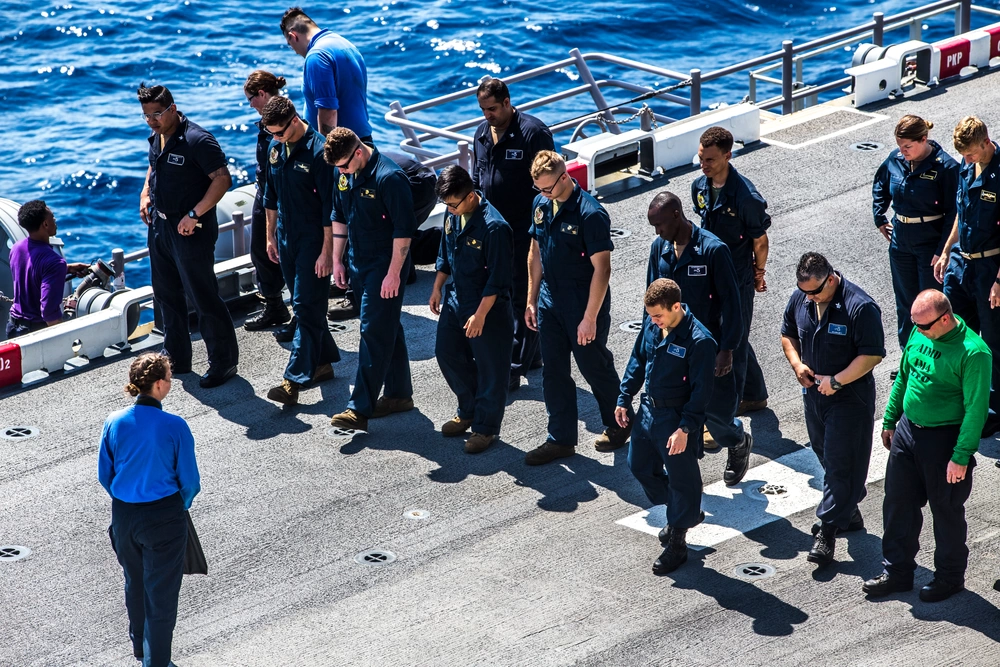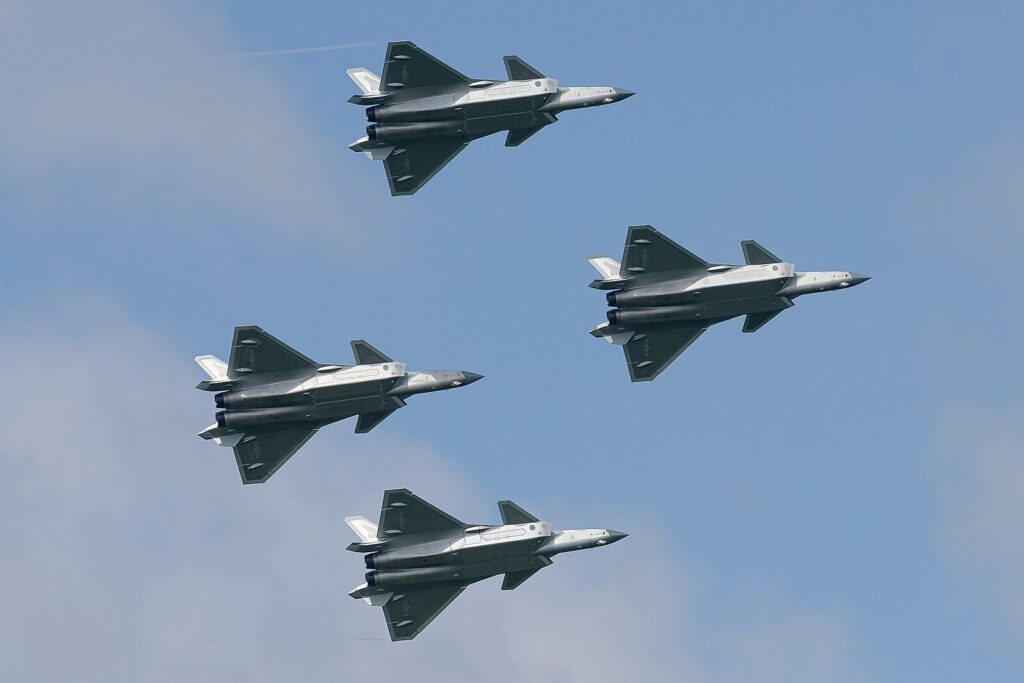The US Navy is forced to wait on its new flagship frigate
- By Frumentarius
Share This Article

The old 17th and 18th century sailing ships known as frigates were renown for their speed and maneuverability in comparison to some larger and slower sailing vessels. The first modern-day variant of the frigate was developed by the British in World War II. This newer version of the ship was used primarily as an anti-submarine escort vessel. The American Navy then developed its own version, first calling the ships “patrol frigates” (PF), then later changing the name to “fast frigate” (FF), and finally “guided missile fast frigate” (FFG), once surface-to-air missiles were developed after WWII (and deployed on navy ships).
The latest and hopefully greatest iteration of the frigate for the U.S. Navy is its forthcoming Constellation-class frigate (FFG-62). Currently in development, the namesake first vessel in the class (the USS Constellation) is being named in honor of one of the first six frigates employed by the U.S. Navy way back at the end of the 18th century.
Based on the European FREMM multipurpose frigate, the FFG-62 is an anti-air, anti-submarine, surface warfare vessel (for ship vs. ship encounters), that also performs electronic warfare. It will carry a vertical launching system (VLS) to deploy the latest surface-to-surface, surface-to-air, and strike missiles; it can accommodate an MH-60R Seahawk helicopter on deck, as well as an unmanned aerial vehicle, the MQ-8C Firescout.
Why do we need a new frigate?
The U.S. Navy’s Oliver Hazard Perry-class frigates (FFG-7) were decommissioned in 2015, and replaced by the smaller Littoral Combat Ship (LCS). The LCS, however, presented all kinds of problems for the Navy, from cost overruns to engineering issues, to questions about sea-worthiness and doubts over the platform’s survivability in high-intensity naval combat. Some even began referring to the LCS derisively as the “little crappy ship.” Ouch.
The Constellation-class frigate is supposed to address those concerns and offer a solution for the future. The new frigates will be able to operate in both deep (blue) water and shallow, near-shore (littoral) environments.
They are also seen as an important naval asset for peer-to-peer naval warfare – the modern term for good old-fashioned country vs. country sea battles. Finally, the FFG-62s are smaller in size and allegedly cheaper in unit cost than their larger naval cousins – the destroyer and cruiser – thus allowing the U.S. Navy to potentially purchase more of them in comparison to the other available surface combatants.
Related: The Navy’s plan to keep its warships in the fight: Rearming at sea
Delays and cost overruns? Frigate about it!
Unfortunately, problems are beginning to put the future of the Constellation-class frigate in doubt. One such complication has been a delay in the ship’s design finalization and the decision to begin construction before that design finalization occurred. In a “horse before the cart” scenario, the Navy decided to begin building the USS Constellation before the ship’s final design was complete. This has predictably led to delays and cost overruns.
The new frigate is also too fat, as weight inflation set in during the build, resulting in as much as a 10% overweight margin. This has consequently impacted its planned speed and service life potential, which again, likely resulted from a failure to properly complete the design before construction began. As a result, while it was originally planned for completion in 2026, the USS Constellation now looks more likely to be completed in 2029.
Finally, the project has also faced delays due to worker shortages at the shipyards where it is being built, and technical failures resulting from the so-far problematic integration of more advanced technologies. This might all sound woefully familiar to those who have followed the development of new weapons systems in the past (F-35 Joint Strike Fighter, anyone?).
Sadly, the U.S. Navy looks to be facing one more delayed defense program in its Constellation-class frigate.
Feature Image: Artist’s rendering of the U.S. Navy guided-missile frigate FFG-62. The design is based on the FREMM multipurpose frigate. A contract for ten ships was awarded to Marinette Marine Corporation, Wisconsin (USA), on 30 April 2020. (U.S. Navy)
Read more from Sandboxx News
- 5 ways to prepare and survive the Marine Corps boot camp
- US appears to be staging stealth bombers for possible strikes against Iran
- What we can deduce about the Boeing F-47 and its capabilities so far
- Navy will soon announce the contract award for its F/A-XX 6th-generation jet, according to reports
- Delta Force Assessment and Selection: Spending nights at base camps
Related Posts
Sandboxx News Merch
-

‘AirPower’ Classic Hoodie
$46.00 – $48.00 Select options This product has multiple variants. The options may be chosen on the product page -

‘Sandboxx News’ Trucker Cap
$27.00 Select options This product has multiple variants. The options may be chosen on the product page -

‘Kinetic Diplomacy’ Bumper Sticker (Black)
$8.00 Add to cart
Frumentarius
Frumentarius is a former Navy SEAL, former CIA officer, and currently a battalion chief in a career fire department in the Midwest.
Related to: Military Affairs

Delta Force Assessment and Selection: Spending nights at base camps

Apophis: Are we prepared to defeat Earth’s greatest planetary threat?

Do sailors have a future in the US Navy? No, according to former Army general

China could stop US airpower from achieving air superiority in the first island chain, top commander says
Sandboxx News
-

‘Sandboxx News’ Trucker Cap
$27.00 Select options This product has multiple variants. The options may be chosen on the product page -

‘AirPower’ Classic Hoodie
$46.00 – $48.00 Select options This product has multiple variants. The options may be chosen on the product page -

‘AirPower’ Golf Rope Hat
$31.00 Select options This product has multiple variants. The options may be chosen on the product page -

‘Sandboxx News’ Dad Hat
$27.00 Select options This product has multiple variants. The options may be chosen on the product page
